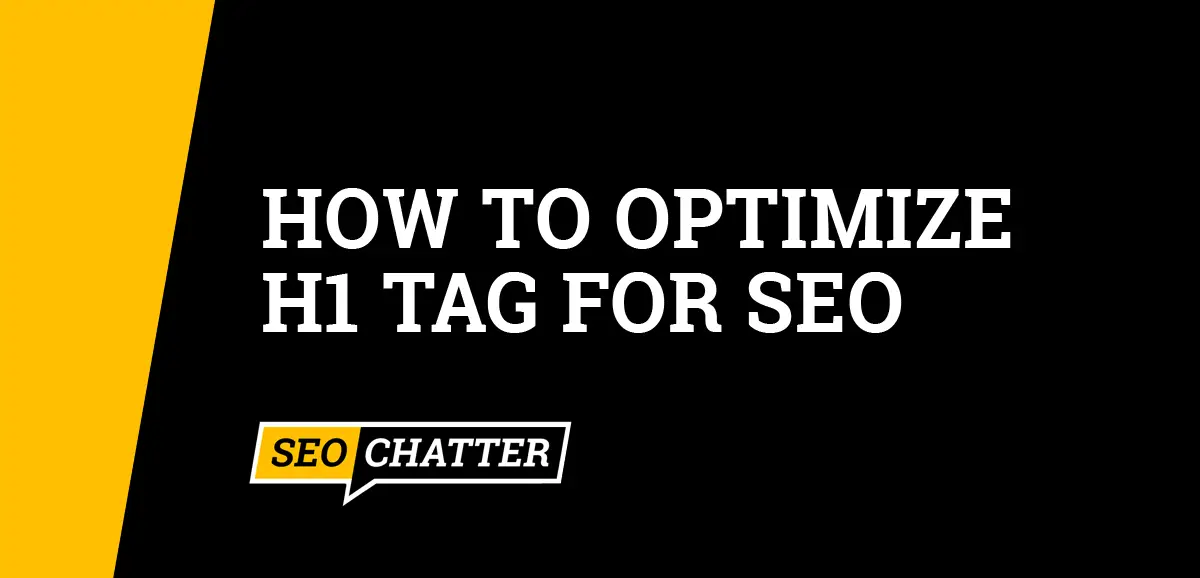This search engine optimization (SEO) guide explains how to optimize H1 tag for SEO.
Below, you’ll find a list of the top H1 tag optimization tips you can use to improve the rankings and traffic for your website based on best practices in digital marketing.
There’s also a section with additional resources that explain more about the fundamentals of the H1 tag in HTML to help you create a better search engine optimization strategy.

How to Optimize H1 Tag for SEO
1. Only Use One H1 Tag Per Page
The first way to optimize an H1 tag in SEO is to only use one of these heading tags per page because it carries the most weight for on-page search engine optimization. Having more than one H1 heading can confuse search engine crawlers as to what the main topic of the page is for SEO.
Additionally, having a single H1 tag in the document structure is the correct way to mark up content using HTML headings. Therefore, having two or more H1 tags on a single page is not advised for a good user experience.
2. Front-Load the Primary SEO Keywords
Another best practice for H1 tag optimization is to front-load your most important keywords in this HTML field.
The H1 tag is where search engine crawlers go to analyze the document structure to understand the key topic for the content. This process allows the crawler to index the page for the most relevant search queries.
The H1 tag is also one of the first elements a user sees on the page because it’s often coded in HTML to be the visible page title to inform readers about the main topic of the content.
Therefore, it’s crucial that you include your primary keyword as close to the start of the H1 header as possible so it carries the most weight for SEO and the user experience. Front-loading your primary SEO keyword is an easy way to increase the rankings of your web page in the search engine results pages (SERPs).
3. Include Secondary Keywords
Including secondary keywords in the main page header is another important way to optimize H1 tags for search engine optimization.
By including one or two secondary keywords—without repeating the overlapping words in the primary keyword phrase—you can boost topical relevance and help your content show up in search engines for more relevant queries.
Trying to keywords stuff the H1 tag with too many exact match keyword phrases can lead to over-optimization and may be detected by the ranking algorithms as an on-page SEO manipulation practice. Therefore, you should only add your secondary keywords int to the H1 heading in a way that reads naturally.
If you look at the H1 tag for this web page, you’ll see this SEO tip in practice. The content is being optimized for the following search terms:
- Primary Keyword: how to optimize H1 tag for SEO
- Secondary Keyword: SEO H1 tags best practices
- Secondary Keyword: H1 SEO best practices
By combining the overlapping words, I was able to properly optimize the H1 tag without being spammy or over-optimizing any single keyword phrase. The resulting H1 heading read like this:
- How to Optimize H1 Tag for SEO (5 Best Practices)
4. Keep the Title Tag Under 70 Characters
Next up on this list of H1 tag optimization tips is to keep the H1 tag to 70 characters or less; including spaces and punctuation.
This strategy will ensure that the H1 heading is concise and readable for users as well as keep it well-optimized for SEO to give it higher ranking weight for search engines like Google, Yahoo, and Bing.
If the H1 tag has too many characters, it dilutes the overall relevancy of the keywords in this HTML location. Therefore, shorter is always better for SEO when it comes to optimizing the H1 heading for search engines. Always aim to hit that sweet spot of being informative, while also maintaining conciseness and relevance.
5. Match the H1 Tag to the Title Tag
If you want to optimize your H1 tag for better SEO in the best possible way, then you should match the H1 header to the meta title tag.
The title tag is the crawlable metadata Google and other search engines use to display in the SERPs for a web page listing. However, beginning in 2022, Google started showing the H1 tag information instead of the title tag for some listings in the SERPs when its indexing algorithm determined that the H1 text was more relevant for the primary search queries.
This process of swapping the H1 tag for the title tag in the SERPs can cause a number of keyword ranking and click-through rate (CTR) issues. Therefore, you can eliminate almost all possibilities of this happening by forcing Google and other search engines to use your custom title tag by duplicating it in the H1 tag for the page.
Learn More About the H1 Tag
The links below explain more about the H1 tag and how to use it correctly for better search engine optimization. Use these resources to expand your knowledge on the subject.
Optimize H1 Tag In SEO Best Practices Summary
I hope you enjoyed this guide explaining how to optimize H1 tag for SEO.
As you discovered, there are many H1 tag optimization tips you can follow to improve your website’s search engine optimization, with the top SEO H1 tag best practices including the use of only one heading per page, front-loading this HTML field with the primary SEO keyword, adding in secondary keywords in a natural way, keeping the tag under 70 characters, and matching the H1 tag to the title tag. Following these guidelines can help improve your overall SEO strategy for higher rankings and traffic.

SEO Chatter is dedicated to teaching the fundamentals of search engine marketing to help marketers understand how to increase organic website traffic and improve search engine rankings.
